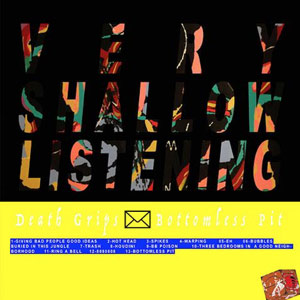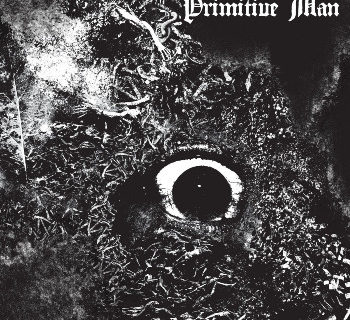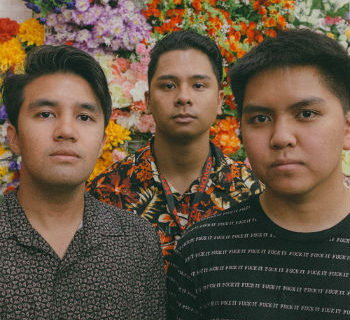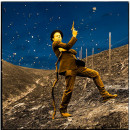VERY SHALLOW LISTENING: This is the inscription on the back of Bottomless Pit, the latest album from Death Grips, a genre-defying experimental hip-hop trio out of Sacramento famous for their abrasive sound and cyberpunk aesthetic. Is the statement just an ironic counter to the title or is it a comment on the album’s sound?
It’s hard to take anything Death Grips says at face value. After all, the band has supposedly been broken up for two years now, though two album releases and a tour suggest otherwise. That being said, Bottomless Pit is one of the band’s more accessible releases, relishing in hooks and catchy guitar riffs. “Accessible” is, of course, a matter of relativity when speaking of Death Grips, a group whose largest commercial success is 2012’s The Money Store, an album with cover art featuring two anime characters clad in bondage gear.
The Money Store, along with the 2011 Exmilitary mixtape, captured the dystopian neurosis of a post- Occupy America, an age where the NSA watches you watching videos of ISIS beheadings and the only way to resist the hegemon is to reject the system and its social norms entirely. The violent and mentally-unhinged character on the early Death Grips projects is a fiction, pure id as opposed to soft-spoken front-man Stefan Burnett’s introversion. Like the protagonist of William Gibson’s Neuromancer, these first few projects portray MC Ride (Burnett’s stage name) as a drug-addled hacker hustling on the margins of a morally bankrupt society, just as self-interested and self-destructive as the world he inhabits. Despite the nihilistic themes, frenzied drumming, and industrial production of these early projects, the product was still distinctively hip-hop, heavy on high-hats and hooks.
Then Death Grips blew up their sound and disavowed the formula that made them famous. Gone were the massive hooks, catchy concert-ready vocals, and transparent political commentary. Instead, Death Grips unleashed a series of esoteric projects with idiosyncratic time signatures and cryptic lyrics. The first half of The Powers That B (2015) consists of deeply unnerving Bjork vocals chopped up and presented in disorienting syncopation, like a cubist painting, exploring the same sound from a variety of perspectives all at once to produce a disorienting effect. These records are so experimental that they can only be considered hip-hop albums in the way that Captain Beefheart’s Trout Mask Replica is a rock album.
Death Grips blew up their sound and disavowed the formula that made them famous. Gone were the massive hooks, catchy concert-ready vocals, and transparent commentary. Instead, Death Grips unleashed a series of esoteric projects with idiosyncratic time signatures and cryptic lyrics.
Now, after plunging to the depths of the deep web and back, we have Bottomless Pit. While Death Grips have kept some of the production tricks and complex commentary, they have returned to a much more accessible package, but done in a very satisfying way. Consider the album’s opener, “Giving Good People Bad Ideas,” which balances MC Ride’s yelling with Clementine Creevy’s pleasant high-pitched vocals and an identifiable formula of verse/bridge/chorus. Far from a criticism of the album, Bottomless Pit is a testament to the band’s ability to endlessly reinvent their sound.
The rock elements explored on the second half of The Powers That B make a welcome return on Bottomless Pit, as do the barrage of synths first unleashed on Government Plates (2013). While every Death Grips album melds a variety of genres together, each is marked by a defining sound: Exmilitary has its heavily distorted samples, No Love Deep Web (2012) its dark minimalism. But just as Dr. Victor Frankenstein brought his monster to life from a dozen different corpses, Bottomless Pit is the unholy union of an amalgamation of genres and sounds. It’s catchier and more accessible, sure, but far from very shallow listening.













